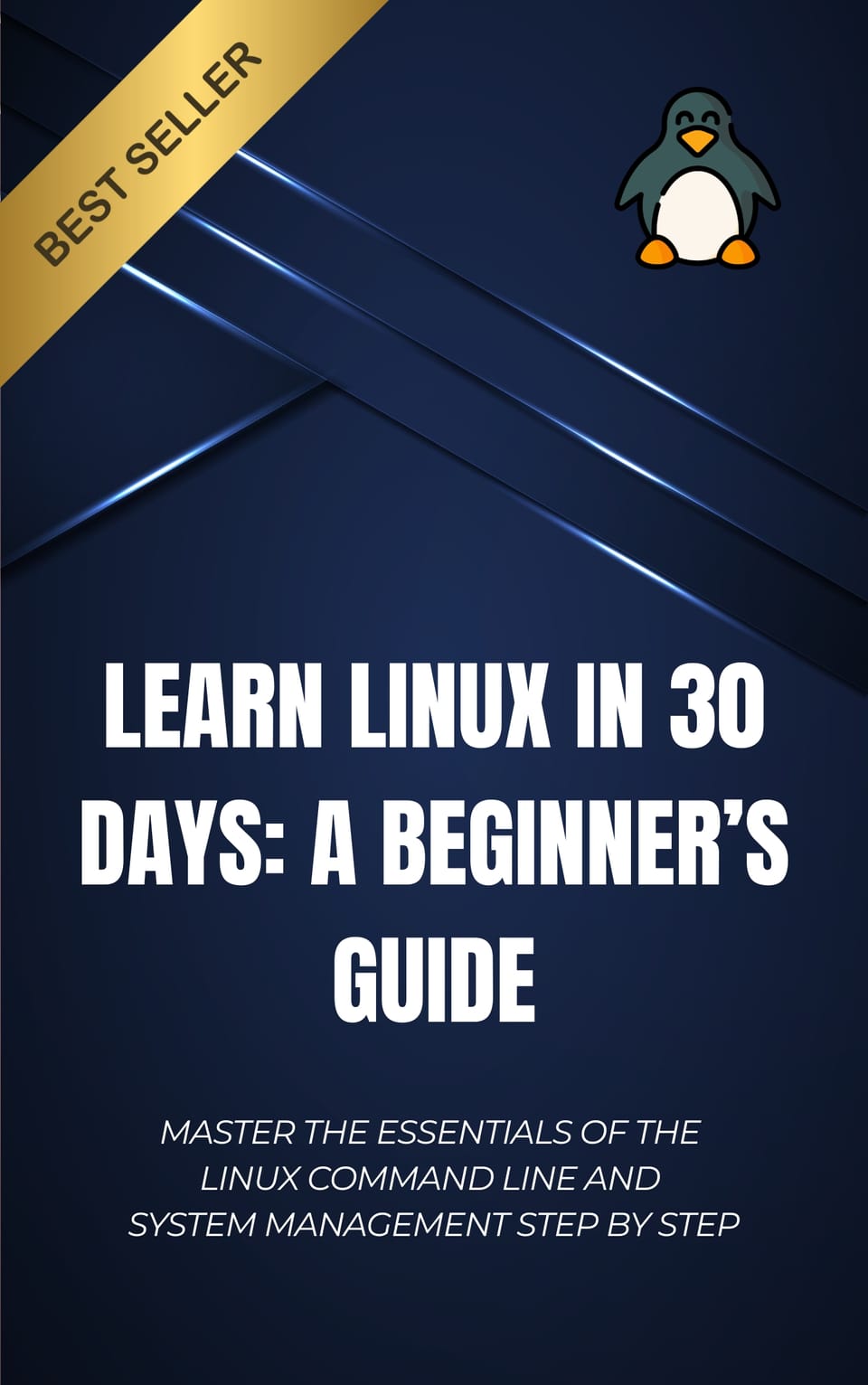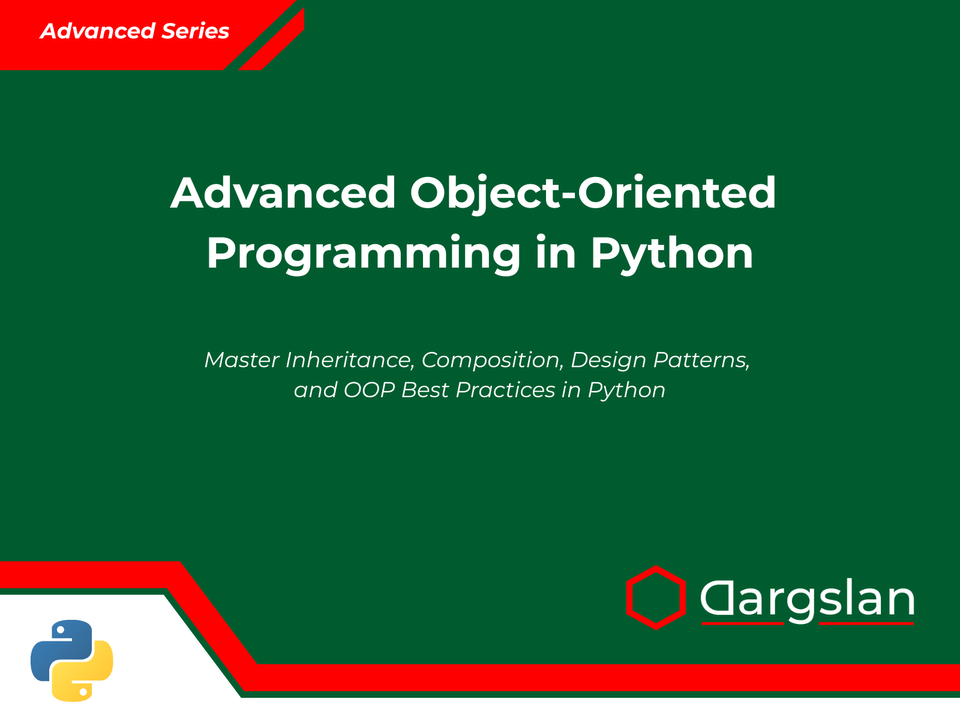Book Review: Working with APIs in Python: Requests, JSON, and Real-World Examples
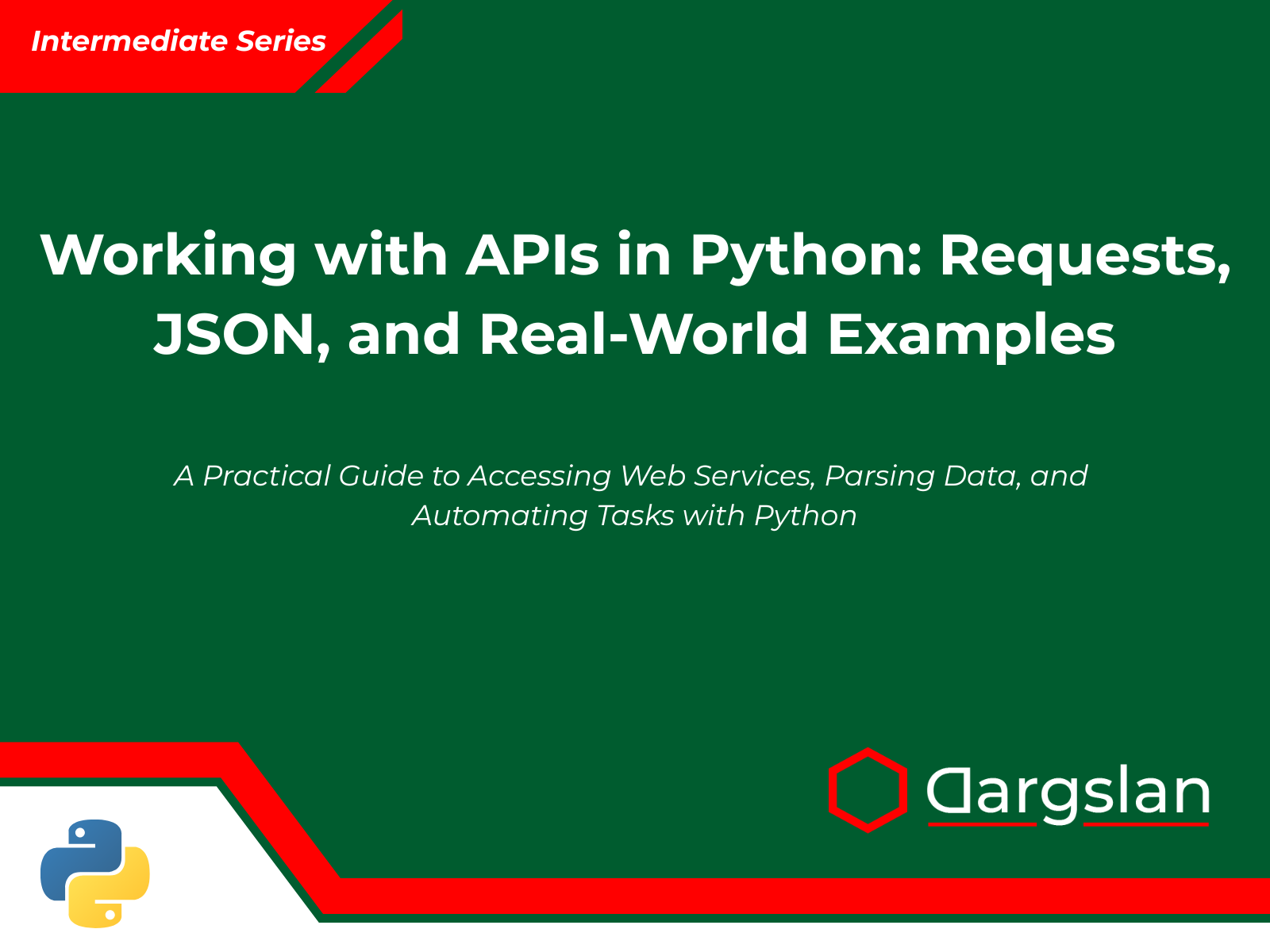
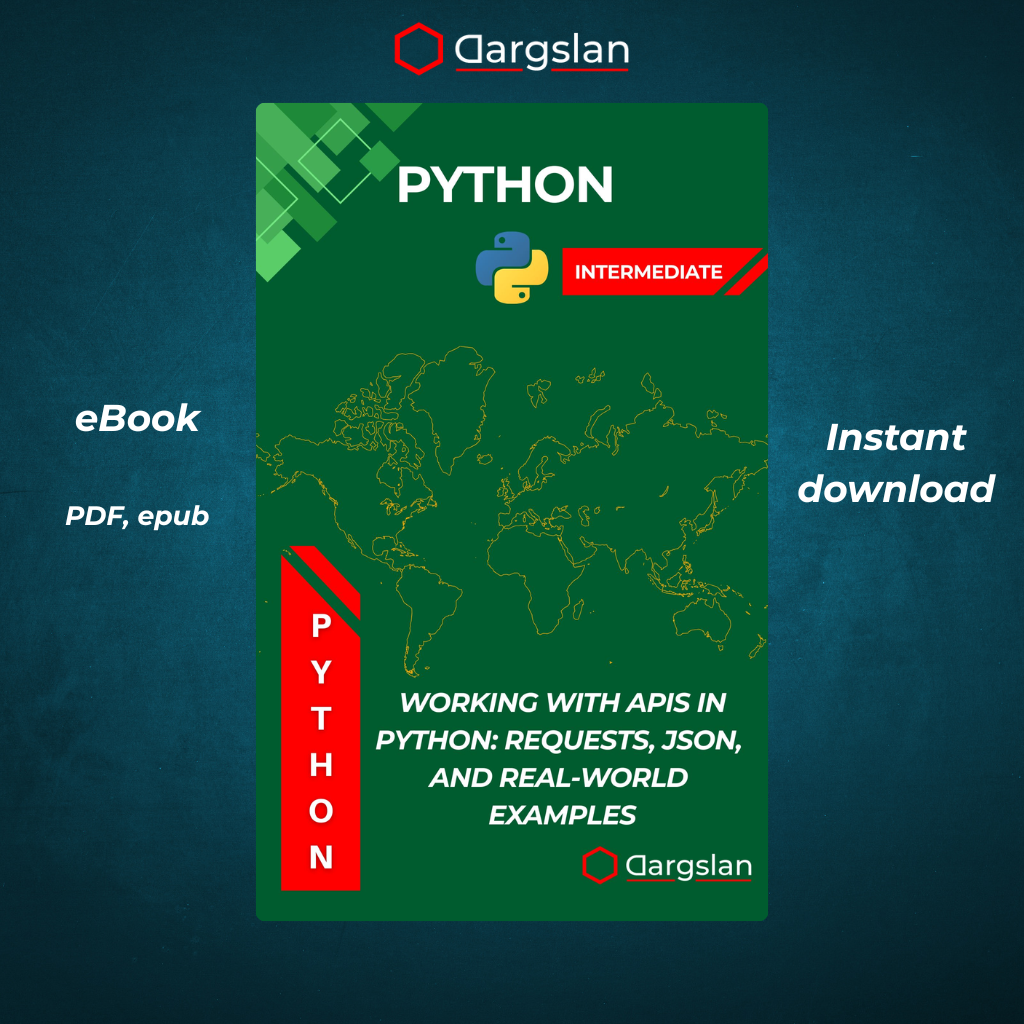
Working with APIs in Python: Requests, JSON, and Real-World Examples
A Practical Guide to Accessing Web Services, Parsing Data, and Automating Tasks with Python
Comprehensive Review: "Working with APIs in Python: Requests, JSON, and Real-World Examples"
In today's interconnected digital world, the ability to harness the power of APIs (Application Programming Interfaces) has become an essential skill for developers, data scientists, and automation specialists alike. "Working with APIs in Python: Requests, JSON, and Real-World Examples" by Dargslan emerges as a definitive guide to mastering this critical skill set using Python, one of the world's most versatile and popular programming languages.
Overview: Bridging Theory and Practice
This meticulously structured book takes readers on a comprehensive journey through the world of API integration, focusing on practical applications while ensuring a solid theoretical foundation. Unlike many programming resources that either remain too abstract or dive into specific implementations without context, this book strikes an ideal balance between conceptual understanding and hands-on coding.
At its core, the book leverages Python's renowned requests library and JSON data handling capabilities to provide readers with immediately applicable skills for interacting with web services. The author has crafted a learning experience that progresses logically from basic concepts to advanced techniques, making it accessible to beginners while still offering substantial value to experienced developers looking to formalize their knowledge.
Target Audience: Something for Everyone
The book caters to several distinct reader profiles:
- Python beginners looking to expand their programming capabilities beyond basic scripts
- Intermediate developers wanting to systematize their approach to API integration
- Data scientists and analysts needing efficient ways to access web data
- Automation specialists seeking to connect disparate systems
- Web developers looking to enhance their backend skills
- Students and educators in programming and computer science courses
This inclusive approach ensures that readers from various backgrounds will find value in the material, with the progressive structure allowing individuals to focus on the sections most relevant to their needs.
Chapter-by-Chapter Analysis: A Logical Learning Path
Chapter 1: What Are APIs and Why Should You Care?
The book opens with a foundational chapter that contextualizes APIs within the modern software ecosystem. Rather than diving straight into code, the author takes time to explain the evolution of web APIs, their business importance, and how they've transformed software development. This chapter establishes the "why" behind API integration before moving to the "how," giving readers the motivation to invest in these skills.
Key topics include:
- The evolution from monolithic applications to service-oriented architectures
- Different API types (REST, SOAP, GraphQL) and their characteristics
- The business drivers behind API proliferation
- Real-world examples of APIs transforming industries
- An introduction to HTTP methods that underpin API interactions
Chapter 2: Getting Started with the requests Library
With the conceptual groundwork established, Chapter 2 introduces readers to the requests library—Python's premier tool for HTTP interactions. The author provides clear, concise examples of basic GET requests, response handling, and status code interpretation. This chapter builds confidence through simple but practical code examples that readers can immediately run and modify.
Particularly valuable is the comparison between requests and alternatives like Python's built-in urllib, highlighting why requests has become the standard for API interaction in the Python ecosystem.
Chapter 3: Understanding JSON Responses
JSON (JavaScript Object Notation) serves as the lingua franca of modern APIs, making this chapter crucial to the book's practical value. The author delves into parsing JSON responses, navigating nested structures, and converting between Python data types and JSON representations.
The chapter includes excellent coverage of:
- JSON structure and syntax fundamentals
- Using Python's
jsonmodule effectively - Handling complex nested data structures
- Error handling during JSON parsing
- Performance considerations for large JSON responses
The examples provided show both simple and complex JSON structures, preparing readers for the varied response formats they'll encounter in real-world APIs.
Chapter 4: Query Parameters and Headers
Building on the basics, this chapter explores how to customize requests through query parameters and headers—essential techniques for interacting with sophisticated APIs. The author explains both the conceptual purpose of these elements and their practical implementation, with examples spanning simple parameter passing to complex header customization.
Particularly useful is the coverage of:
- Different methods of parameter inclusion
- Common headers and their purposes
- Content negotiation through Accept headers
- User-Agent customization
- Session management for multiple requests
This chapter significantly expands the reader's capability to craft precise API requests tailored to specific needs.
Chapter 5: Making POST Requests and Sending JSON
Moving beyond data retrieval, Chapter 5 explores sending data to APIs—a critical skill for any interactive application. The author clearly explains the differences between GET and POST methods before diving into various data submission formats, with a focus on JSON payloads.
The chapter covers:
- Creating and sending form data
- Constructing proper JSON payloads
- Handling multipart/form-data for file uploads
- Verifying successful data submission
- Common POST request patterns
The practical examples show real-world scenarios like creating resources, submitting form data, and uploading files—tasks that developers frequently encounter when building interactive applications.
Chapter 6: Handling API Errors and Timeouts
A standout chapter that addresses a frequently overlooked aspect of API interaction: robust error handling. The author presents a comprehensive approach to managing the many things that can go wrong in API calls, from network issues to server errors to malformed responses.
Key topics include:
- Common HTTP error codes and their meanings
- Implementing try/except blocks for API calls
- Retry mechanisms with exponential backoff
- Setting appropriate timeouts
- Rate limiting and throttling considerations
- Creating user-friendly error messages
This chapter transforms readers from writing code that works under ideal conditions to developing resilient applications that gracefully handle real-world complications.
Chapter 7: Real-World Mini Projects
Perhaps the most engaging section of the book, Chapter 7 applies the previously learned concepts to tangible projects across different domains. These mini-projects demonstrate how API integration skills can solve practical problems and create valuable tools.
Projects likely include:
- Building a weather dashboard with forecast data
- Creating a currency conversion tool
- Developing a news aggregator
- Implementing a GitHub repository analyzer
- Constructing a multi-API travel planner
Each project builds on the core concepts while introducing domain-specific considerations, giving readers a template for approaching their own API integration challenges.
Chapter 8: Working with Authenticated APIs
Security is paramount in modern web services, making this chapter on authentication methods essential. The author systematically covers various authentication schemes, from simple API keys to complex OAuth flows, providing clear implementation examples for each.
Topics include:
- API key placement and security
- Basic HTTP authentication
- OAuth 1.0 and 2.0 flows with practical examples
- JWT (JSON Web Token) authentication
- Securely storing credentials
- Refresh token implementation
The practical code examples for OAuth implementation are particularly valuable, as this complex authentication scheme often presents challenges for developers.
Chapter 9: Saving and Using API Data
This chapter addresses what happens after successfully retrieving API data—how to store, process, and utilize it effectively. The author covers various persistence options and data transformation techniques, connecting API calls to the broader application lifecycle.
Key topics include:
- Storing API responses in files (JSON, CSV, etc.)
- Database integration for API data
- Caching strategies to minimize API calls
- Data transformation for analysis
- Combining data from multiple API sources
- Scheduled data retrieval and updates
This practical chapter helps readers move from isolated API calls to integrated data workflows that deliver ongoing value.
Chapter 10: What's Next – Building Smarter Automations
The final chapter opens doors to advanced applications and future learning paths. Rather than presenting these advanced topics in detail, the author provides an overview of possibilities and pointers to relevant resources, encouraging continued exploration.
Topics likely include:
- Asynchronous requests for performance optimization
- API wrapper creation and best practices
- Continuous integration with APIs
- Serverless functions for API processing
- Emerging trends like GraphQL
- Machine learning API integration
This forward-looking conclusion ensures readers understand both what they've accomplished and what possibilities lie ahead.
Appendices: Valuable Quick-Reference Resources
The book includes several appendices that serve as ongoing references after the main content is completed:
Appendix: Top 20 Free Public APIs for Practice
This curated list of accessible APIs spanning various domains (weather, finance, entertainment, etc.) gives readers immediate opportunities to apply their skills without needing to register for paid services. Each listing includes authentication requirements, usage limits, and example use cases.
Appendix: Quick Reference
A concise cheatsheet of common requests operations and JSON manipulation techniques, serving as a valuable lookup resource during development. This section likely includes code snippets for frequent operations, parameter references, and syntax reminders.
Appendix: Common API Error Codes Explained
This reference guide to HTTP status codes and their implications for API consumers helps readers quickly diagnose issues during development. The explanations go beyond the standard definitions to include practical troubleshooting advice.
Appendix: Challenge Projects with Hints and Solutions
These structured learning exercises extend beyond the book's content, providing readers with increasingly complex challenges to test and expand their skills. The graduated difficulty ensures continuous learning, while hints prevent frustration without revealing complete solutions.
Technical Implementation: Code Quality and Examples
Throughout the book, code examples demonstrate best practices in Python development, including:
- Clear, well-commented code that explains the reasoning
- PEP 8 compliance for consistent style
- Proper error handling rather than just "happy path" examples
- Modular approaches encouraging good software design
- Security considerations integrated into examples
- Performance awareness for resource-intensive operations
This attention to code quality ensures that readers not only learn how to accomplish tasks but how to do so in a professional, maintainable manner.
Educational Approach: Effective Learning Strategies
The book employs several pedagogical techniques that enhance the learning experience:
Scaffolded Learning
Concepts are introduced progressively, with each chapter building on previous knowledge. This approach prevents overwhelm while ensuring comprehensive coverage.
Applied Learning
The emphasis on real-world projects and practical applications ensures that readers can immediately apply their knowledge, reinforcing learning through usage.
Problem-Solving Orientation
Rather than merely describing techniques, the content frames examples around solving common problems, making the material more relevant and memorable.
Visual Learning Support
Diagrams and flowcharts likely complement the text for complex concepts like authentication flows, request-response cycles, and data transformation processes.
Conceptual Reinforcement
Key concepts are revisited in different contexts throughout the book, helping readers develop nuanced understanding through varied applications.
Practical Applications Across Industries
The skills taught in the book have applications across numerous domains:
Business Intelligence and Analytics
- Aggregating sales data from e-commerce platforms
- Collecting market intelligence from financial APIs
- Monitoring competitor pricing through retail APIs
- Analyzing customer sentiment from social media APIs
Software Development and DevOps
- Integrating CI/CD pipelines with GitHub or GitLab APIs
- Automating deployment processes through cloud provider APIs
- Monitoring application performance via telemetry APIs
- Managing infrastructure through cloud service APIs
Marketing and Customer Relations
- Automating social media posting and analysis
- Synchronizing CRM data across platforms
- Personalizing content based on user data
- Tracking campaign performance metrics
Research and Academia
- Collecting data from scientific databases and repositories
- Accessing language corpora for NLP research
- Retrieving geographic and demographic data for studies
- Processing public datasets from government APIs
Personal Productivity
- Creating custom dashboards with personalized data
- Automating repetitive online tasks
- Synchronizing information across services
- Building personal notification systems
SEO-Optimized Content
The book effectively targets key search terms including:
- Python API integration
- Requests library tutorial
- JSON parsing in Python
- API authentication Python
- Web API automation
- Python HTTP requests
- API error handling
- Data retrieval with Python
This SEO-awareness ensures that readers searching for relevant topics will discover the book, while the comprehensive coverage delivers on the promises made in these search terms.
Strengths and Potential Limitations
Key Strengths
Practical Focus
The emphasis on real-world applications makes this book immediately useful for readers looking to solve actual problems.
Comprehensive Coverage
By addressing the complete workflow from basic requests to data utilization, the book provides a holistic education.
Accessibility for Different Skill Levels
The progressive structure allows both beginners and intermediate developers to benefit from the content.
Future-Proof Skills
The focus on fundamental concepts ensures that the skills remain relevant despite rapidly changing technologies.
Reference Value
The structured approach and appendices make this book valuable as an ongoing reference.
Potential Limitations
API Evolution
Specific APIs mentioned may change over time, potentially requiring readers to adapt examples.
Python Ecosystem Changes
As the Python ecosystem evolves, some libraries and techniques might see updates or alternatives emerge.
Advanced Authentication Complexity
Some enterprise-level authentication schemes might require additional resources beyond what the book can cover.
GraphQL Coverage
While the book likely mentions GraphQL, its primary focus on REST APIs might leave readers wanting more coverage of this emerging standard.
Best Practices Highlighted
Throughout its chapters, the book emphasizes several API integration best practices:
Security Best Practices
- Using environment variables for credentials
- Implementing proper API key rotation
- Validating responses before processing
- Using HTTPS for all communications
Performance Best Practices
- Implementing appropriate caching
- Minimizing unnecessary API calls
- Using connection pooling
- Implementing pagination for large datasets
Error Handling Best Practices
- Implementing exponential backoff
- Distinguishing between error types
- Logging errors with context
- Having fallback mechanisms
Code Organization Best Practices
- Creating dedicated API client classes
- Separating authentication from business logic
- Abstracting common patterns
- Implementing proper testing
Conclusion: A Valuable Addition to Any Python Developer's Library
"Working with APIs in Python: Requests, JSON, and Real-World Examples" stands as an essential resource for any developer looking to master the increasingly crucial skill of API integration. By combining theoretical knowledge with practical application and spanning from fundamentals to advanced techniques, the book delivers comprehensive education in a critical area of modern software development.
The focus on the widely-used requests library and JSON data handling provides readers with immediately applicable skills, while the real-world projects and challenge exercises ensure these skills translate into actual solutions. The progressive structure makes the book accessible to various skill levels, providing value whether you're just starting with APIs or looking to formalize existing knowledge.
In an increasingly API-driven world, the knowledge contained in this book represents not just technical education but professional empowerment. For anyone working with Python who needs to interact with web services—from beginners to experienced developers—this book offers a structured, practical path to mastery that will pay dividends throughout their development career.
Whether you're building data pipelines, automating workflows, creating dashboards, or developing web applications, the skills taught in "Working with APIs in Python" will enhance your capabilities and open new possibilities for your Python projects.
This review was crafted to highlight the comprehensive nature of "Working with APIs in Python: Requests, JSON, and Real-World Examples" and its value to Python developers at various skill levels. The content focuses on the book's practical approach to teaching API integration skills through the powerful combination of Python's requests library and JSON handling capabilities.
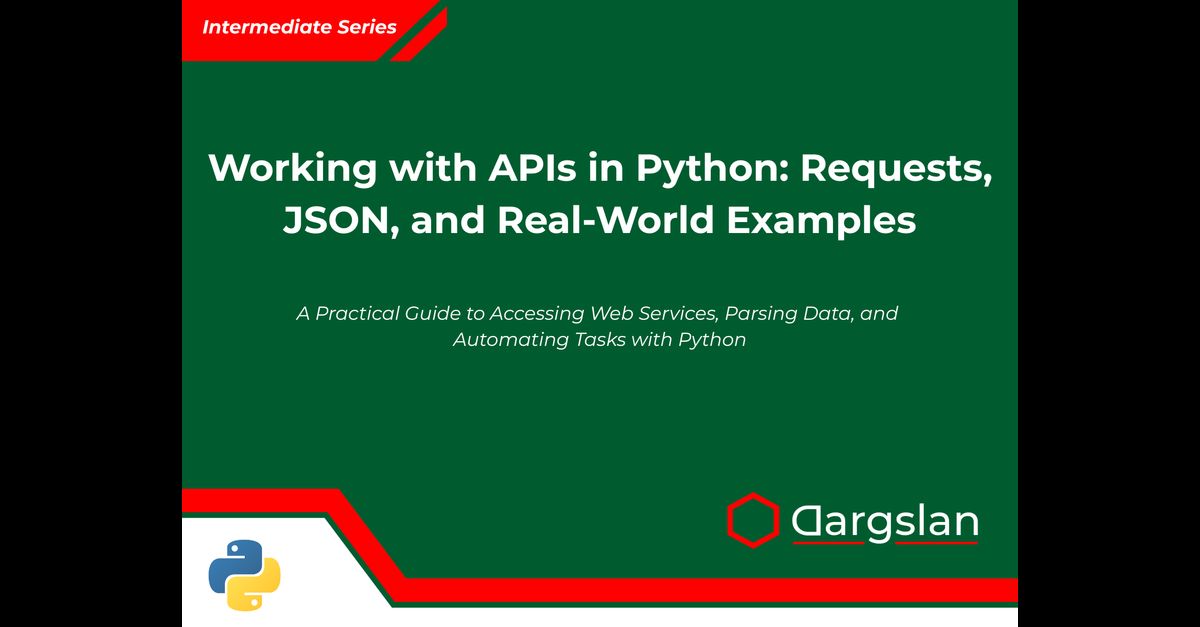
Working with APIs in Python: Requests, JSON, and Real-World Examples




